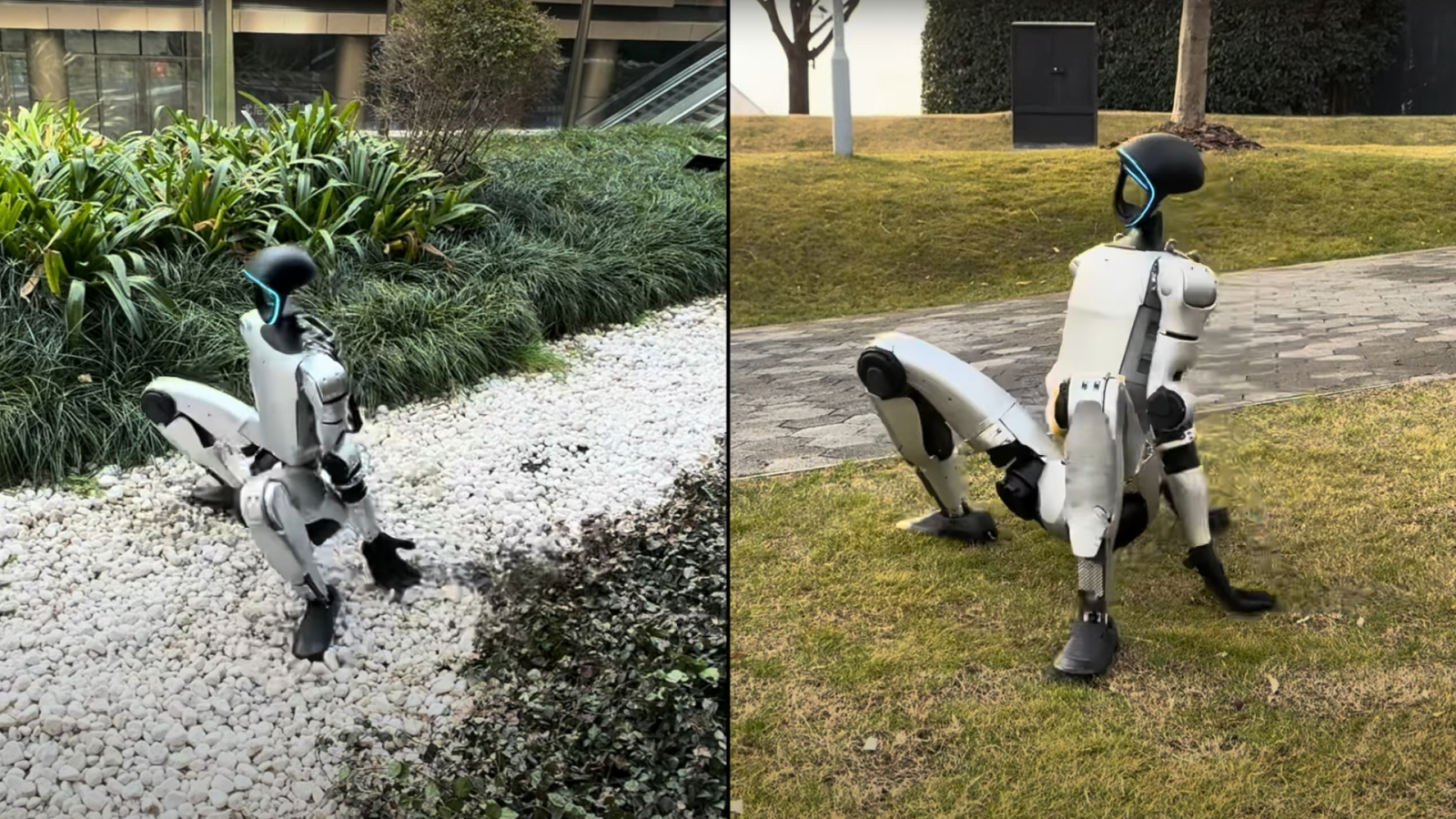When you buy through links on our situation , we may earn an affiliate commission . Here ’s how it work .
Like Spider - Man scaling skyscraper , people may someday climb glass bulwark with the help of a gecko - inspired invention , researchers say .
In gain to futuristic gearused by soldier and spies to climb walls , the researchers suggest their new excogitation could guide to boots that facilitate spaceman impart spacewalks and to mechanical grippers that snag debris in orbit .

Elliot Hawkes climbs up a glass wall using a device he and his colleagues developed.
The invention was inspired by gecko foot . These reptile can scale vertical walls and even hang upside down because their plumptoes are covered in 100 of microscopic bristlescalled setae , which render a kind of electrical effect have it off as van der Waals force , strong enough to keep gecko stuck onto surfaces . [ Biomimicry : 7 Clever Technologies Inspired by Nature ]
scientific discipline of stickiness
Scientists discovered how gecko stickiness works more than a decade ago , and since then , researchers have developed many synthetical adhesives with geckolike properties , such as reusability . Advances based on such applied science include medicaladhesives that can seal wounds .

But one problem that both real geckos and synthetic materials face is that they can not support as much weight as one would predict from the total area of adhesive surface they possess . For illustration , a motorcar know as Stickybot , created by research worker at Stanford University , had enoughgeckolike adhesiveto support an 11 - dog pound ( 5 kilograms ) load , but in praxis , the motorcar could support only a tenth part of that weight .
" We notice our twist was n’t performing to its highest potential , and engineer detest inefficient thing , " said lead work author Elliot Hawkes , a mechanically skillful engineer at Stanford .
Now Hawkes and his colleagues have outdone nature with Modern gecko - inspired gadget that they have used to climb Methedrine walls . The twist are about the sizing of a human hand but are nevertheless solid enough to support the weight of a someone .

In contrast , if one were to somehowtry wax wallswith substantial gecko human foot , a climber weighing about 155 lbs . ( 70 kg ) would ask a sticky surface at least 186 square column inch ( 1,200 substantial centimeters ) large . In comparison , a modern tennis racket has an area of about 105 square inches ( 675 sq . cm ) .
How it works
The equipment consists of two plates that a social climber holds . Each home base is covered with 24 tile , each about 1 straight inch ( 6.4 sq . cm ) in size , or about as large as a stamp postage stamp . Each tile is covered with tiny silicon rubber hairs about 100 microns high , or as improbable as an mean human hair is all-inclusive .

Each tile is colligate to the rest of the gimmick by a tendonlike string that ends in a fountain made of an metal love as nitinol . Unlike most natural spring , which get stiffer when they stretch out , nitinol springs become less stiff the more they stretch out .
By smartly do the tendon , the researchers ensured that a climber ’s weight gets spread evenly across each tile .
" I was the climber in the tests , " Hawkes said . " That was extremely exciting . To be able to climb methamphetamine hydrochloride mat up a little bit wizard — it feels like you ’re hooking this gimmick onto a perfectly flat suave surface , and it does n’t feel potential . " [ Science Fact or Fiction ? The Plausibility of 10 Sci - Fi Concepts ]

Real geckos and previous semisynthetic geckolike gimmick distribute weightiness in such a way that somepatches of adhesive bread and butter more weightthan their neighbors . " Then , when one tile gets overload with weight , it will fail , and then its neighbors will bomb , and such failure will propagate like an avalanche , " said study co - source Mark Cutkosky , a mechanically skillful technologist at Stanford .
The new machine plump for what are essentially pedals that a climber places his or her feet in . This elbow room the crampon ’s weightiness is pulling on the adhesive tiles and not on the climber ’s arm . " It feels like a movable ladder , like I ’m direct a new spoke with each step , " Hawkes said .
" Tostick the adhesive onto a surface , you just mistreat on the surface , and to lift it off , you just take your weight off the surface , " said study co - author Eric Eason , an practice physicist at Stanford .

Hawkes neither climbs as a hobby nor professionally . " I wanted to design a system that an everyday person could apply , " he enunciate .
Gecko - inspired tech
In June , researchers at the U.S. Department of Defense had reported developing a hardened ofgecko - inspire handheld paddlesthat could affirm a 218 - pound . ( 99 kilograms ) man carrying a 50 - lb . ( 23 kg ) pack while he scaled a 25 - foot - gamy ( 7.6 metre ) trash wall . However , these paddles are much larger than the new machine that Hawkes and his fellow worker have developed .

The scientists are now looking to use their adhesive to snag garbage in space . Orbital debris can cause a lot of damage by slamming into spacecraft , astronauts and satellites at focal ratio much faster than bullets . magnet would not do well at capturing space junk because many structures in space are made of material that are , at best , weakly attracted by magnetic fields . Suction cup are similarly not a viable solution , since they only work in gentle wind , not in the vacancy of space , and many other adhesives would freeze down and break up in the common cold of blank .
" We ’re work on a project to build a ' garbage truck ' satellite that can grab space rubble and remove it either to a burying ground range or to the standard atmosphere where it can burn up , " Hawkes sound out .
Applications closer to Earth may include manufacturing robot to grasp panes of glass , solar panel and video screens . The engineering could also be used to develop climbing automaton " to inspect or clean-living windows , " Eason sound out . awkward pads could also aid flying robot drones cling onto windows , Hawkes say .

The scientists detail their findings online Nov. 18 in the journal Interface .











